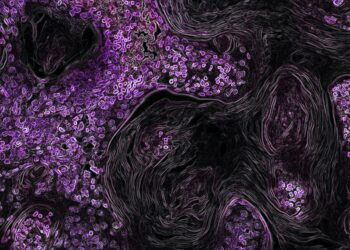The holiday season is filled with joy, but for those with allergies, it also brings the challenge of managing allergies from Christmas trees. While live Christmas trees add beauty to holiday decor, they can trigger uncomfortable allergic reactions for many.
Understanding Allergies symptoms from Christmas Trees
When you introduce a real Christmas tree into your home, you may face allergies from Christmas trees, characterized by symptoms like a stuffy or runny nose, watery eyes, sneezing, coughing, wheezing, and an itchy throat. These reactions occur because real Christmas trees can carry over 50 species of mold. Molds such as Aspergillus, Penicillium, and Cladosporium are commonly found on these trees, along with terpenes, the compounds responsible for the fresh pine scent, which can also trigger allergies.
Choosing the Right Tree to Reduce Allergies from Christmas Trees
Selecting the appropriate tree is essential in preventing allergies from Christmas trees. If you’re allergic, an artificial Christmas tree might be a better choice, as it does not harbor mold, dust mites, or pollen, common allergens associated with real trees.
For those who prefer real trees, choosing a freshly cut tree and storing it in a dry place before bringing it indoors can minimize mold exposure. A helpful tip is to vigorously shake the tree outdoors before it enters your home to dislodge any loose allergens, thus reducing the amount of mold, dust, and pollen brought inside.
Cleaning and Care to Manage Allergies from Christmas Trees
Once your tree is set up indoors, cleaning the branches and decorations with a damp cloth can remove any residual allergens. Utilizing a tree stand with a water reservoir helps keep the tree hydrated, which can reduce the release of allergens. However, it’s crucial to regularly change the water to avoid mold growth.
Positioning your tree away from heating vents is advisable as it prevents the spread of allergens through your home. Instead, place the tree in a cooler, well-ventilated area to maintain clean air in your living space.
Treating Symptoms from Allergies from Christmas Trees
Many find relief from allergies from Christmas trees through over-the-counter medications like antihistamines and decongestants, which can alleviate sneezing, runny nose, and watery eyes. For more severe symptoms, nasal sprays and allergy shots might be recommended.
Additionally, installing a high-quality air purifier equipped with a HEPA filter in your home can be beneficial. These filters are effective at capturing fine particles like mold spores and pollen, thus improving indoor air quality.
Spreading Awareness About Managing Allergies from Christmas Trees
Sharing knowledge on managing allergies from Christmas trees is helpful. Using social media or personal blogs to share tips and personal experiences on selecting, cleaning, and caring for Christmas trees can empower others to make informed decisions and enjoy their holidays without allergy discomfort.
Conclusion
Don’t let allergies from Christmas trees undermine your holiday spirit. By taking the right precautions and employing effective treatments, you can enjoy the festive beauty of a Christmas tree without suffering through uncomfortable symptoms. Choose your tree wisely, maintain cleanliness, and address any symptoms promptly to ensure a joyful and comfortable holiday season.
Further Resources
Visit the Allergy & Asthma Network for more advice on managing allergies from Christmas trees or consult a healthcare professional for personalized guidance. Additionally, explore the EPA’s Guide to Air Purifiers to discover the best options for maintaining clean air in your home.















